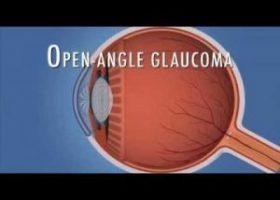- Home
- Editorial
- News
- Practice Guidelines
- Anesthesiology Guidelines
- Cancer Guidelines
- Cardiac Sciences Guidelines
- Critical Care Guidelines
- Dentistry Guidelines
- Dermatology Guidelines
- Diabetes and Endo Guidelines
- Diagnostics Guidelines
- ENT Guidelines
- Featured Practice Guidelines
- Gastroenterology Guidelines
- Geriatrics Guidelines
- Medicine Guidelines
- Nephrology Guidelines
- Neurosciences Guidelines
- Obs and Gynae Guidelines
- Ophthalmology Guidelines
- Orthopaedics Guidelines
- Paediatrics Guidelines
- Psychiatry Guidelines
- Pulmonology Guidelines
- Radiology Guidelines
- Surgery Guidelines
- Urology Guidelines
Open-Angle Glaucoma in One Eye Likely to Develop in the Other

In a new study published in JAMA Opthalmology, researchers report that people suffering from open-angle glaucoma in one eye are more likely to develop glaucoma in the second eye.
Leslie M. Niziol and associates conducted a post hoc analysis to estimate the time between initial glaucoma treatment of the study eye (SE) and the need for treatment of the fellow eye (FE) and to ascertain the concordance between rates of progression in SEs and FEs.
Read Also:Eye drops with Turmeric-derivative may be new treatment of glaucoma
The study included 607 participants with newly diagnosed open-angle glaucoma in 1 or both eyes and was followed up for up to 11 years. An SE was designated at baseline and randomized to medical or surgical treatment. The probability that the fellow eye would be treated for open-angle glaucoma was 57% at one year after randomization and 68% at seven years. Older patients and those with hypertension, higher intraocular pressure (IOP) or large cup-to-disc ratio were all significantly more likely to eventually need treatment of the fellow eye.
Key study findings:
- Among patients with newly diagnosed open-angle glaucoma, almost half had initial treatment of both eyes.
- After 7 years, approximately two-thirds of patients had bilateral treatment.
- Of the variables predictive of FE treatment, modifiable factors included hypertension and IOP.
- Slopes of MD were similar between SEs and treated FEs
The study concluded that study eye change is a signaling factor of fellow eye change and therefore requires close observation.
Open-angle glaucoma is the most common form of glaucoma, accounting for at least 90% of all glaucoma cases. It is caused by the slow clogging of the drainage canals, resulting in increased intraocular pressure.
For reference log on to 10.1001/jamaophthalmol.2018.3274.

Disclaimer: This site is primarily intended for healthcare professionals. Any content/information on this website does not replace the advice of medical and/or health professionals and should not be construed as medical/diagnostic advice/endorsement or prescription. Use of this site is subject to our terms of use, privacy policy, advertisement policy. © 2020 Minerva Medical Treatment Pvt Ltd